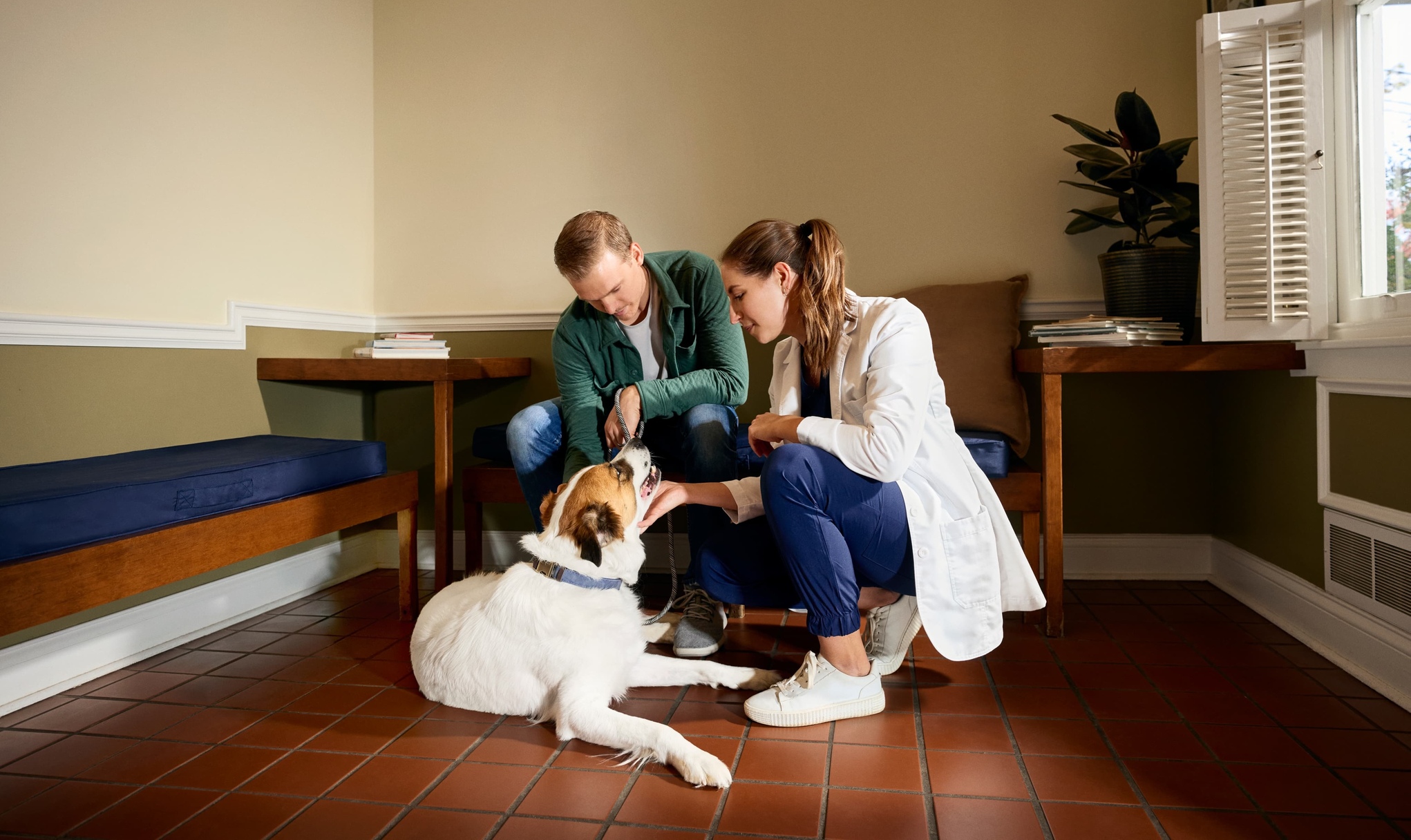
This article was contributed by Dr. Katja Lang from Heart of Chelsea Animal Hospital in New York. You can follow her @doctor_kibble!
If you take away one simple fact from this article, I hope it’s this important statistic: On average, dogs with a normal body condition score live 2 years longer than obese dogs. If you’re anything like me (and I think you are if you’re feeding The Farmer’s Dog!), then 2 extra years with your dog is precious time.
Obesity is defined as a 20% increase from normal body weight. This means that if your dog should weigh 10 pounds but actually weighs 12 pounds, he is considered obese.
According to the Association for Pet Obesity Prevention, an estimated 59% of cats and 54% of dogs in the US are overweight or obese. Unfortunately, based on my expertise and the number of animals I see every day, I would say this statistic is accurate. Just like in humans, obesity predisposes your pet to health issues like arthritis, heart/respiratory disease, diabetes, and certain cancers.
So how can you determine if your pet is at an ideal weight? First off, their ribs should be easily felt when petting them with the palm of your hand. Their abdomens should also be tucked and not sagging when viewing their bodies from the side, and their waists should be visible from overhead behind the ribs.
If your pet isn’t at his most svelte, it’s important to rule out any underlying medical conditions such as hypothyroidism as a cause of obesity. Always speak to your veterinarian about screening your pet for these conditions, especially if your pet is middle-aged.
Once your pet has been cleared for any underlying health issues, you can move on to evaluating other causes of obesity:
Are they getting enough exercise?
In order to be successful, a weight loss plan needs to include both a reduction in calories and an increase in exercise. The goal should be to lose between 1-2% of body weight every week. However, losing weight too quickly can also be dangerous. It’s best to speak to your veterinarian regarding how many kilocalories are appropriate for weight loss and what type of food/exercise is recommended.
Are they eating too many treats/human food?
Often we don’t realize that giving a dog a bully stick is the equivalent of a jelly donut. Healthy alternatives for dog treats include celery, green beans, and freeze dried beef liver. A general rule of thumb is that your pet should receive no more than 10% of his daily caloric intake from treats.
Despite those puppy dog eyes, love for your pet should not be displayed by overdoing the high calorie food and treats. It should be displayed by praise and attention, long walks, and working to maintain a healthy weight. So next time you order too much at dinner, forget the doggy bag and grab the leash. You and your dog will both be happier and healthier and will have more time to enjoy each other’s company.




